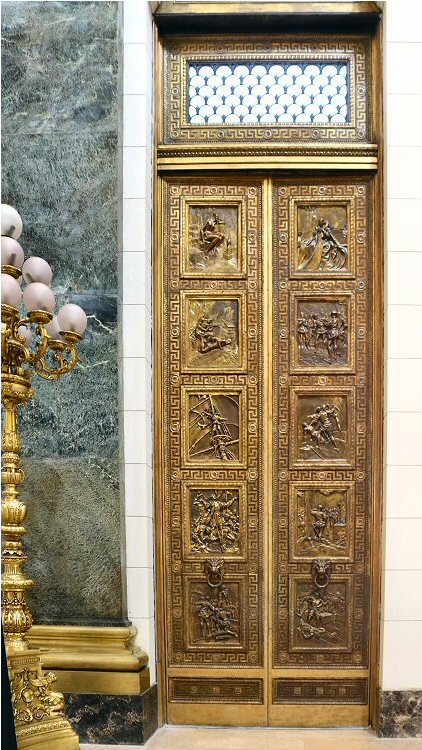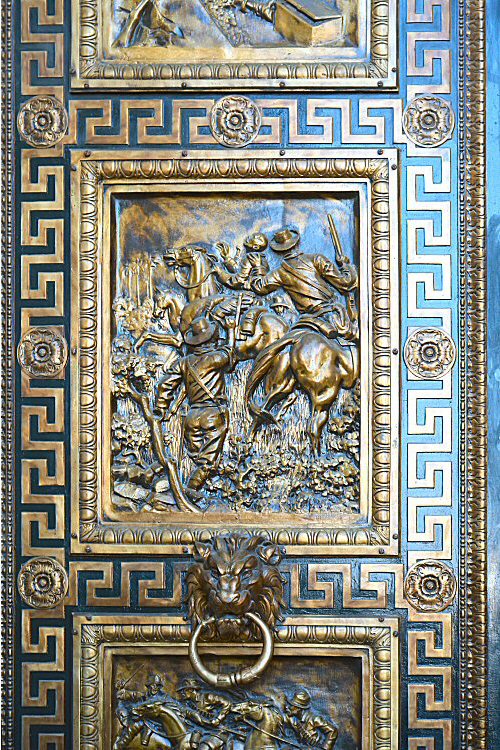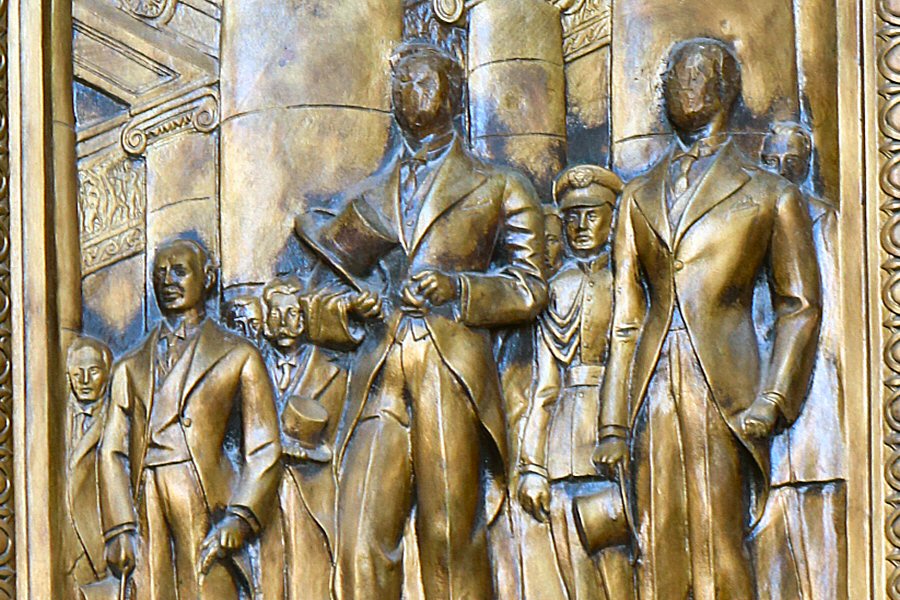
El Capitolio has amazing proportions
(207,5 meters in length and 91,5 meters in width; 681 x 300
feet). It was the tallest building in Havana until 1950s,
dominating this part of the city. The building has pure
lines. It is made of limestone and granite. Its design is
tailored to Cuba’s tropical weather by creating multiple
patios that maximize the air circulation.
Looking from outside, the most striking feature of the building is its cupola that can be perceived from various points all over the city. Most people compare the neoclassical dome that is looming above the surrounding buildings, to the Capitol Building in Washington, DC, but in fact its designer, Eugenio Rayneri Piedra, inspired it from the Panthéon in Paris. It was constructed in the United States as a stone clad around a steel frame and transferred to Havana. It is set forward on the building and placed on the center of the main hall, so that enough space was created for large rooms at the rear. At current, one of these rooms houses the National Library of Science and Technology. The height of cupola reaches about 92 meters (302 feet), so that the Cubans like to brag about the four meters (12 feet) difference in the height between the Capitolio and its counterpart in Washington DC, USA, in favor of the former. It was the highest point in Havana until 1950s, when the tower of the José Martí Memorial (109 m) was built. On the other hand, it was the third highest cupola on the world at the time of its construction. The cupola has a diameter of 32 meters. Originally it was covered with 22-carat gold plates. During the restoration process that started in 2010, the gold sheets were promised to be financed by Putin’s Russia. Some say that the collaboration of the Russian Federation in rehabilitation amounts to million Euros, on the contrary to the authorized budget of 300.000 Euros, but still the cupola awaits the gold sheets to complete the general rehabilitation program started in 2010. The cupola is crowned by a lantern that is supported by 10 columns that will illuminate Havana night with five revolving reflectors.
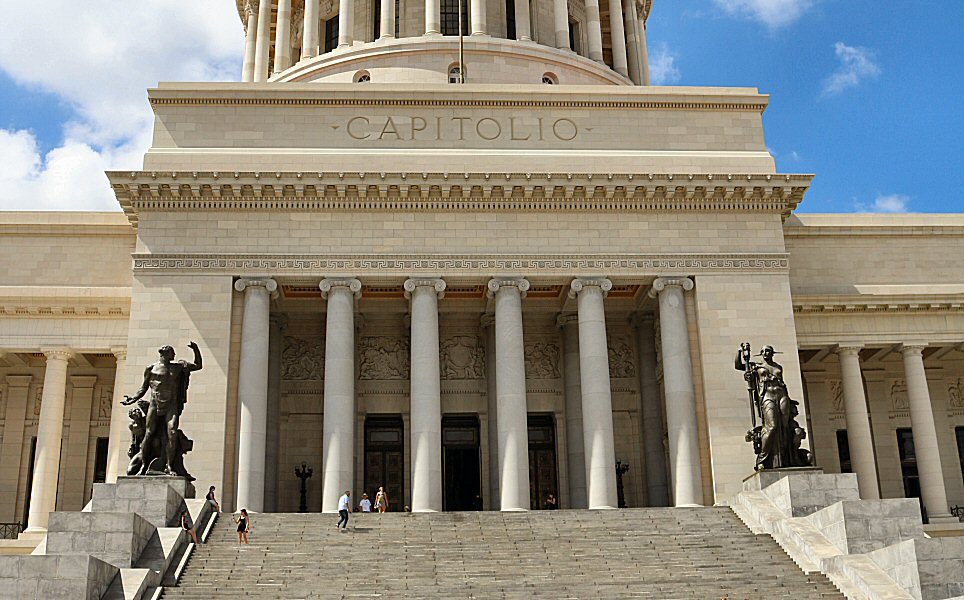
The building can be accessed by a
36-meters wide, granite staircase, known as La Escalinata. The
superb stairway, composed of 55 steps, leads to the portico that
is 16 meters high from the street (Paseo de Martí). The highest
steps are ideal to take panoramic photos of the surrounding
buildings. There are intermediate landings at each 14 steps. At
the end of the stairway, on both sides, there two groups of
impressive bronze statues on granite pedestals that have a
height of about 7 meters and a weight of 15 tons. The guardians
of the staircase are the work of the Italian sculptor Angelo
Zanelli. The statue on the right side belongs to two men that
represent the work (El Trabajo) and the progress (El Progreso),
and to the left is the statue of a woman that represents the
tutelary virtue (La Virtud Tutelar).
In the central portico there are 12 granite columns with Ionic capitals, arranged in two rows. Each column is about 14 meters tall and has a diameter of about 1,5 meters. The intercolumnar spaces above the doors and at the lateral walls of the central portico are decorated with Boticcino marble reliefs, sculpted by Angelo Zanelli.
Beyond
the central portico three large doors allow access to the inner
of the building. Both sides of the superb doors are covered by
bronze bas-relief panels, designed by Enrique García Cabrera,
representing some important events in the history of Cuba.


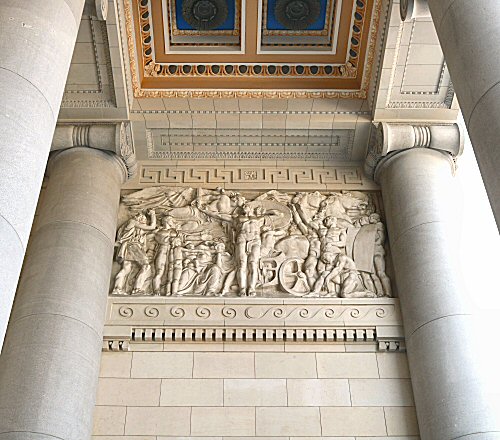

The doors are decorated with lion head
shaped door handles with ring stock.
The main building has two adjoining
buildings in the shape of a semicircle at each wing,
corresponding to the Senate and the House of the
Representatives. Each wing has a portico with 9 Ionic columns
that have the same size of the columns in the central portico.
Above the windows of about 7 meters high and about 2 meters
wide, some bas-reliefs carved in stone stand out as beautiful
decorative motifs. The bas-reliefs on the right wing symbolize
the land trade, the milling, the labor, the mining, the
education, the ceramics, the justice, the mechanics, the family,
the light industry and the maritime trade. Those of the left
wing represent the discoverers, the sowing, the lumberjacks, the
carpentry, the tobacco, the metallurgy, the agriculture, the
cane, the forge of metals, the distillery and the spinners. At
the end of the right wing there are four bas-reliefs more,
representing the dance, the music, the poetry and the
architecture, whereas the bas-reliefs at the end of the left
wing represent the mathematics, the chemistry, the astronomy and
the physics.
